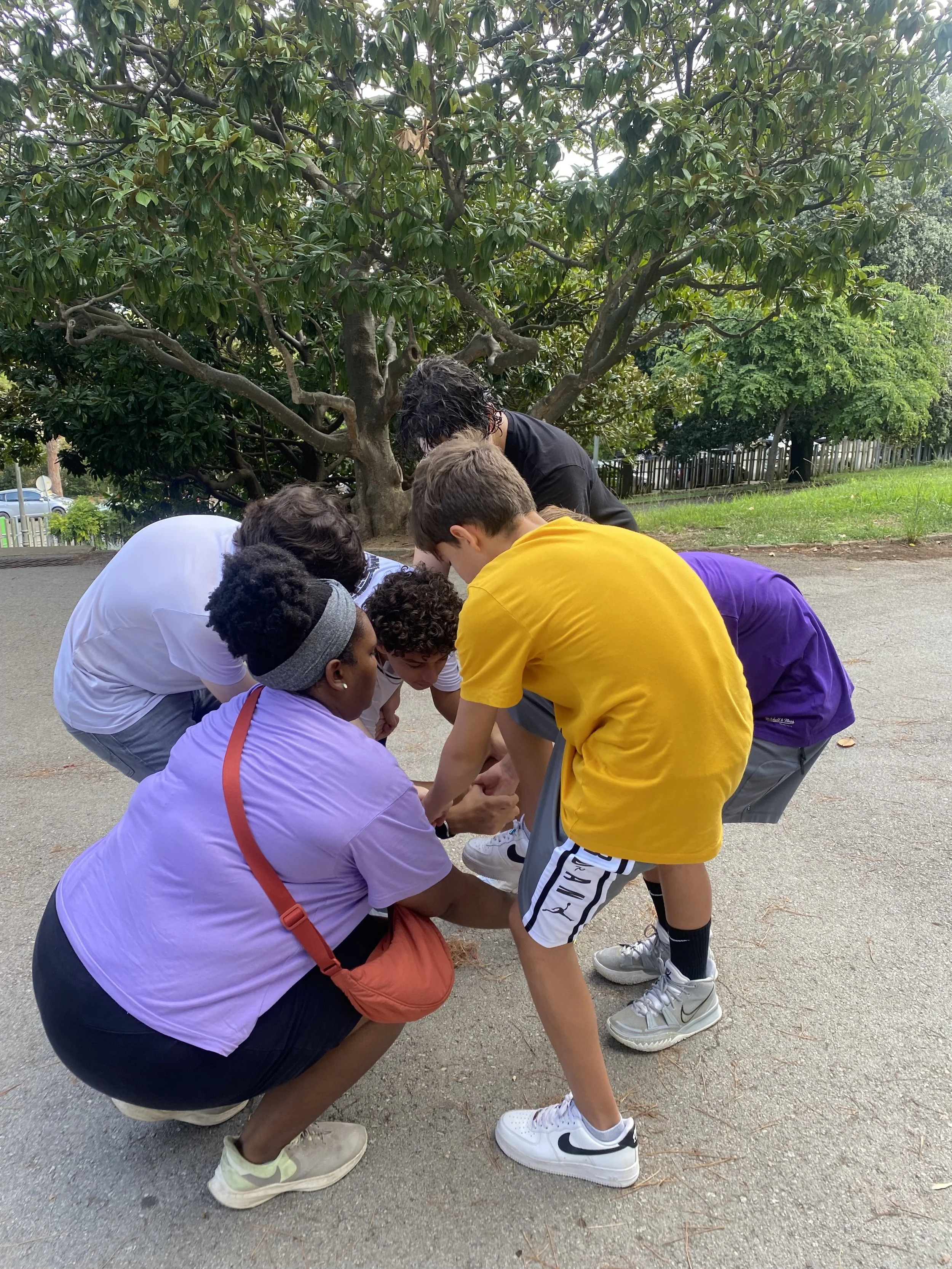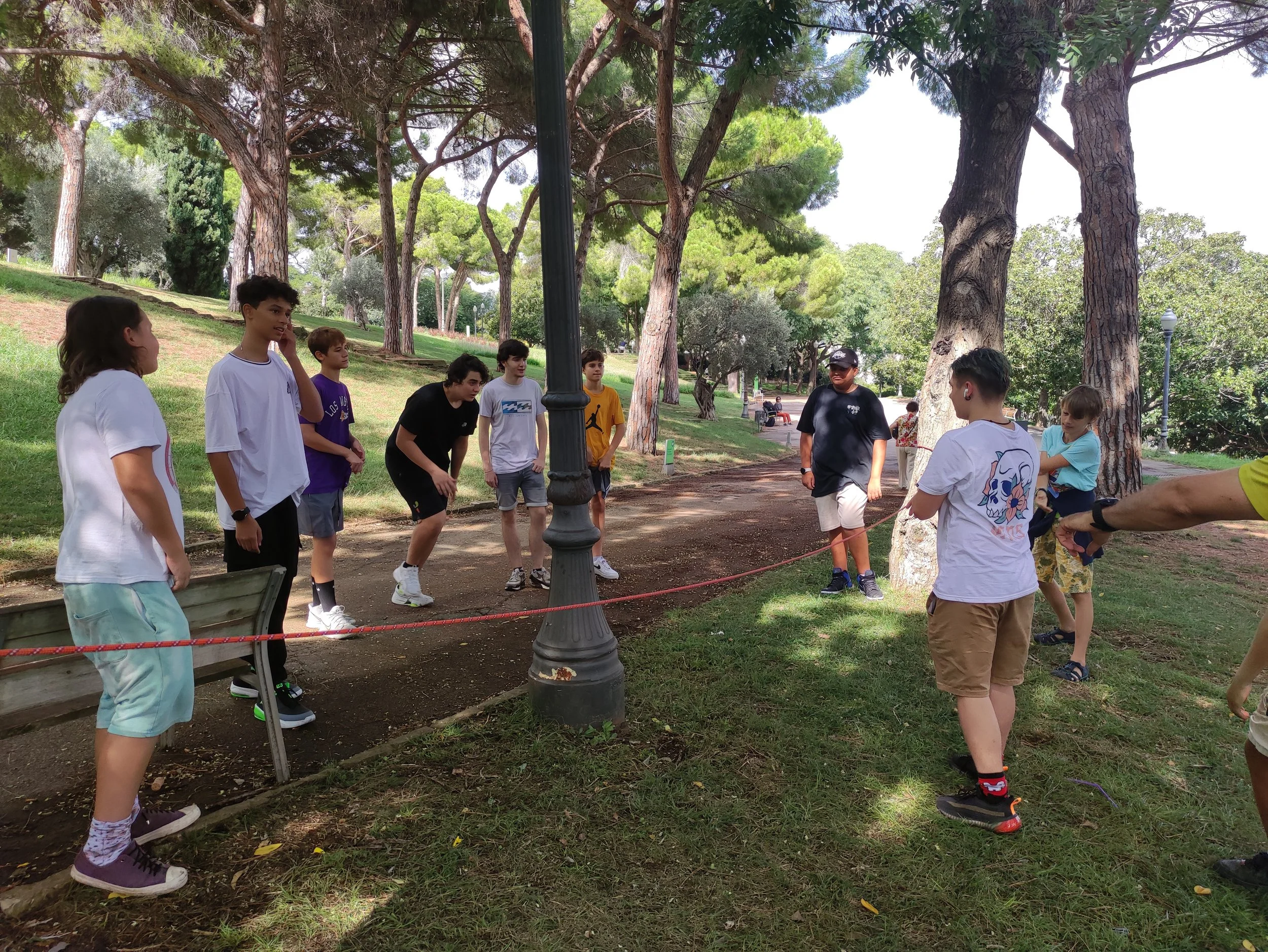5 Team building activities for teenagers
Team building activities are an essential part of adolescent development, as they provide opportunities for teenagers to develop important skills such as communication, collaboration, and problem-solving. These activities not only promote personal growth but also foster a sense of belonging and unity among participants. They can be a great way to break the ice at the start of a new school term or even before embarking on an expedition such as the Adventurous Journey section of the Duke of Edinburgh Award.
In this article, we will explore five team building activities that your students will love! Whether it's outdoor adventures, creative indoor projects, virtual challenges, or problem-solving tasks, there is something for everyone to enjoy and benefit from.
1) Human knot
In this fun physical activity, teamwork is essential. Students form a human knot, which they have to work together to untangle. It will also give you an idea of which students show leadership qualities.
Materials needed: none
How to play:
Have students stand in a circle, making sure they are close together. If you have a large class, having students play in two or more groups may be better. The larger the group, the more complicated the puzzle will be.
Tell students to reach across the circle with each arm and hold the hands of two other students. They can't choose the people standing on either side of them. Make sure students hold a left hand with their left hand, and vice versa. Now the human knot is formed.
Tell students that they have to try to untangle the knot without dropping the hands they are holding. When they have successfully untangled the knot, students will be standing in a regular circle holding hands.
Students will need to bend, twist, and move under or step over other students' arms.
Tip: If one student is reluctant to play, give them the role of "director". This student can walk around the outside of the knot, giving instructions to help the group solve the problem.
If you are doing this in groups, have them race against each other. The team to solve the problem first - wins.
2) Magic carpet
In this game, teams stand on a "magic carpet" which they have to turn over while still standing on it. Teams must decide on a strategy together and carry it out — if they try to do it individually, someone will inevitably fall off.
Materials needed: rugs, towels, or large pieces of cardboard (one per team)
How to play:
Give each team their magic carpet and have them stand on it. Tell students they are on a magic flying carpet high in the sky, but there's a problem — the carpet is upside down. They need to turn the carpet over without anyone falling off.
They need to devise a strategy for turning the carpet over without anyone touching the floor.
Teams can work individually, or they can collaborate to help each other.
The activity can be set up as a race to see which team flips their carpet first.
Tip: Encourage students to rethink their strategy if it doesn't appear to be working. Evaluating your decisions and adapting your plan is a useful 21st-century skill that students can use throughout the school year.
3) Rope pass
In this physical challenge, teenagers have to work as a team and think critically to get all participants from one side of the rope to the other.
Materials needed: 1 x 10m rope
Preparation: Find two trees, poles or other similar structures that are 3 or 4m apart. Tie the rope between the two, approximately 1m off the ground. If it can be done on grass or over a soft surface, better.
How to play:
Have all students stand one side of the rope. Explain they need to get the entire team across to the other side. However, they mustn’t touch the rope, go under it, or go around (or touch) the structures that the rope is attached to.
Participants should work together and help each other until they complete the challenge. If the touch the rope or break the rules they must start again.
The easiest way to complete the challenge is by students working together to lift the smaller ones over. With the tallest or most athletic student waiting until the end when he or she can jump over the rope.
4) The sky’s the limit
Teenage students love a practical challenge; in this activity, the element of competition will undoubtedly get them involved. With just basic materials, students have to work together to build the tallest freestanding tower within a time limit.
Materials needed: balloons (one pack per team), sticky tape, a tape measure, balloon pumps (optional)
How to play:
Have students form teams of four and hand out the materials.
Tell students to build the tallest freestanding tower using just balloons and sticky tape in ten minutes. Explain that after ten minutes, you will check and measure the structures. If it falls over, that team is eliminated from the challenge.
Tell students how much time is left after five minutes and again two minutes before the time ends.
Have teams stand back from their towers. Inspect each tower, measure it, and record the results. You may wish to give the winning team a prize.
Tip: Increase the challenge by giving students mixed bags of different-shaped balloons, including modelling balloons.
Another fun alternative game to this is ‘the egg drop’. Where students have to build a structure out of materials you can find in class to protect an egg which you’l drop from somewhere up hi. Your egg doesn’t break? You win!
5) My eyes, your eyes
Students will have lots of fun guiding each other or being guided through an obstacle course by their teammates. This activity tests communication skills and builds trust between pairs of students.
Materials needed: blindfolds or scarves (one per pair) and obstacles, e.g., chairs and boxes.
Preparation: Before the activity, set up the obstacle course by placing furniture and other items around the classroom. Decide where the route students take will begin and end, marking the finish line.
How to play:
Put students in pairs. If possible, have them work with a student they don't know very well. Have one student in each pair cover their eyes with a blindfold. This student is a blinded person and their partner will be their eyes.
The guide stands behind their blind partner and places their hands on their partner's shoulders. Their job is to quietly give instructions to guide their partner towards the finish line, navigating the obstacles.
The first pair to finish wins.
Have students swap roles. Move some of the obstacles. Then repeat the activity.
Tip: If possible, play the game in the playground or in the school gym. The larger the space, the more complex you can make the route.
Tips for Facilitating Effective Team building Activities
Facilitating team building activities for teenagers requires careful planning and consideration. Here are some tips to ensure a successful and beneficial experience for all participants:
Creating a Safe and Inclusive Environment
It is essential to create a safe and inclusive environment where teenagers feel comfortable expressing themselves and collaborating with others. Set clear expectations for behaviour, encourage respect, and promote open communication. Ensure that the activities are inclusive and cater to the diverse needs and abilities of all participants.
Encouraging Participation and Engagement
Promote active participation and engagement by providing clear instructions, setting achievable goals, and offering support and encouragement. Incorporate elements of fun and excitement to keep teenagers motivated and interested throughout the activities. Provide opportunities for reflection and feedback to facilitate personal growth and learning.
Team building activities offer teenagers a chance to develop essential life skills while having fun and engaging in meaningful experiences. Whether it's exploring the great outdoors, unleashing their creativity indoors, or connecting virtually, teenagers can benefit greatly from these activities. So, why not incorporate some team building activities into your teenage group or organisation and witness the positive impact it can have on their lives?



